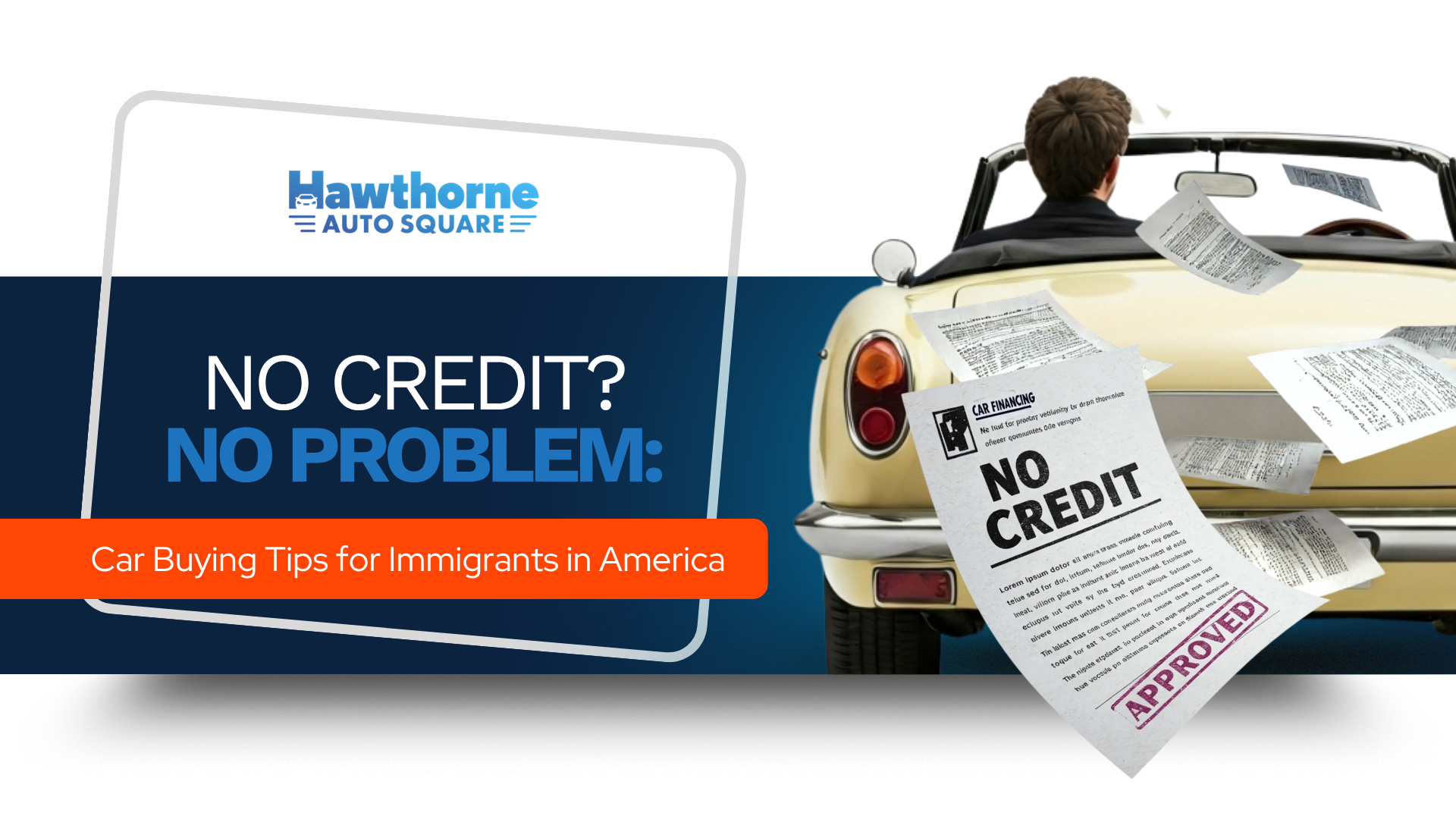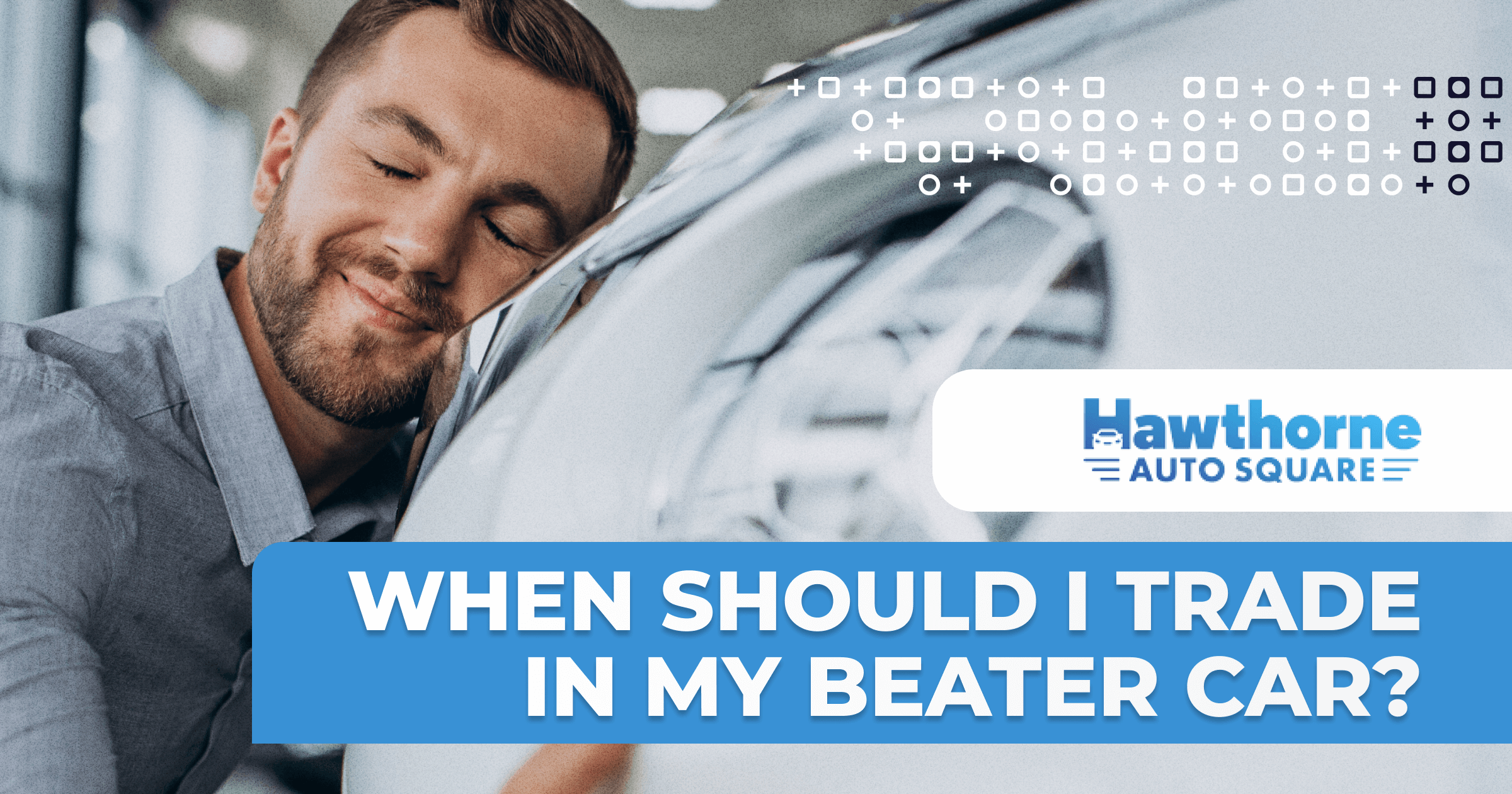
- SALES : (866) 707-7664
- PAYMENTS : (866) 902-7955
- 11646 PRAIRIE AVE, HAWTHORNE, CA 90250
- MON - SAT 8AM - 8PM | SUN 10AM - 6PM
- SALES : (866) 707-7664
- PAYMENTS : (866) 902-7955
- 11646 PRAIRIE AVE, HAWTHORNE, CA 90250
- MON - SAT 8AM - 8PM | SUN 10AM - 6PM
When Should I Trade in My Beater Car?

If you have an older, high-mileage vehicle, or beater car, you may want to trade it in. This is one of the best ways to get a new or used car. If you’ve been weighing the decision lately, here are some insights into when you should consider a trade-in.
It Costs Too Much to Fix
Those dents, rusty spots, stains, and other damage add up. And even if your car doesn’t run, a dealership will still accept it. You just won’t get as good a price for it. Trading in a vehicle is simple and takes a few minutes. It can even be towed to the dealership if necessary, and all you need to do is sign off on your trade-in.
However, selling the car privately is more time consuming. Private buyers usually examine the car very carefully for wear and tear and will check its service and accident history. If your car isn’t in demand, the process can take weeks or months. Prospective buyers may want to take test drives. You’ll have to file DMV paperwork to transfer it over. And the sale isn’t final until the day the buyer arrives and drives the vehicle away.
Early or Later in the Year
The best time of year to do a trade-in depends on the type of car. Different vehicles may be more valuable during certain seasons. For example, if you want to trade in a convertible, try the winter when demand is lower. You may get a better deal.
With new cars, the end of the calendar year is often the best time to trade-in or purchase one. Dealerships are preparing for new inventory by clearing out what they have, while manufacturers are closing out production of current models. Therefore, you’ll find incentives and rebates on top of potentially better trade-in deals.
Your Car’s Mileage Is Relatively Low
If your car has an above-average number of miles on the odometer, its value may be lower. However, if the number is below the average, you can get a higher payout. According to Kelly Blue Book; in 2019, the average person drove 14,263 miles. Multiply that by how many years the car has been driven to determine how your vehicle compares.
The Car’s Value Is More Than What You Owe on It
Prices have risen sharply in recent months. There’s a chance your car has increased in value to more than what you still owe on it. This is known as positive equity. A trade-in may be a good bet, but selling your car could be an option as well. Positive equity can be used to cover a down payment on your next vehicle.
Warranty
Whether your car is still under a manufacturer’s warranty can affect its trade-in value. You can obviously get a better deal if the warranty is still good. A manufacturer’s warranty of 3 years or 36,000 miles, whichever comes first, is common. Check your car’s warranty status and use that in negotiating a trade-in deal.
How Much Can I Get for My Trade-In?
There are a lot of variables and each car is different. You’ll almost always get a less than trade-in value for your car from the dealership. Most of the time, the vehicle needs to be cleaned up, serviced, and placed on the used car lot. The trade-in may be wholesaled at an auction. Regardless, the dealer will need to spend money and time preparing the vehicle for sale, processing paperwork, or transporting it to the site of sale or auction. There are a lot of expenses involved and, unless the car is in near-perfect condition and an easy re-sell, the dealer probably won’t pay much.
Nevertheless, trading in a car with high mileage, that’s in poor condition, or in low demand can save time and money compared to selling it privately.
Visit Hawthorne Auto Square
The Edmunds vehicle appraisal tool is available on our website to help assess your beater car’s trade-in value. It provides a reference, so you know whether you receive a good offer. You can also use the number when negotiating. We also offer stress-free financing, with approval regardless of your credit, and service and maintenance plans. To get started, browse our online inventory or visit our dealership in person; call 866-707-7664 for more information or to schedule an appointment.
Latest News


Why Should I Buy a Used Toyota Camry?

Bankruptcy and Car Ownership: How BHPH Can Help


Used Car Price Trends for 2025: What Buyers & Sellers Need To Know
Get approved
It only takes a few minutes and won’t affect your credit.
- Pre-Inspected Cars
- Clean Title
- Under Warranty
Latest Videos
What Do I Need To Buy A Car - Hawthorne Auto Square
Second Chance for a New Car - Hawthorne Auto Square
Pre Approved Auto Lone – Hawthorne Auto Square
- SALES : (866) 707-7664
- PAYMENTS : (866) 902-7955
- 11646 PRAIRIE AVE, HAWTHORNE, CA 90250
- MON - SAT 8AM - 8PM | SUN 10AM - 6PM
© 2025 Hawthorne Auto Square. All Rights Reserved. Website Designed by: Ad Leverage | Privacy Policy | Terms of Service | Manage Cookies | DSAR |License #91864
© 2025 Hawthorne Auto Square. All Rights Reserved. Website Designed by:
Ad Leverage | Privacy Policy | Terms of Service
License #91864

